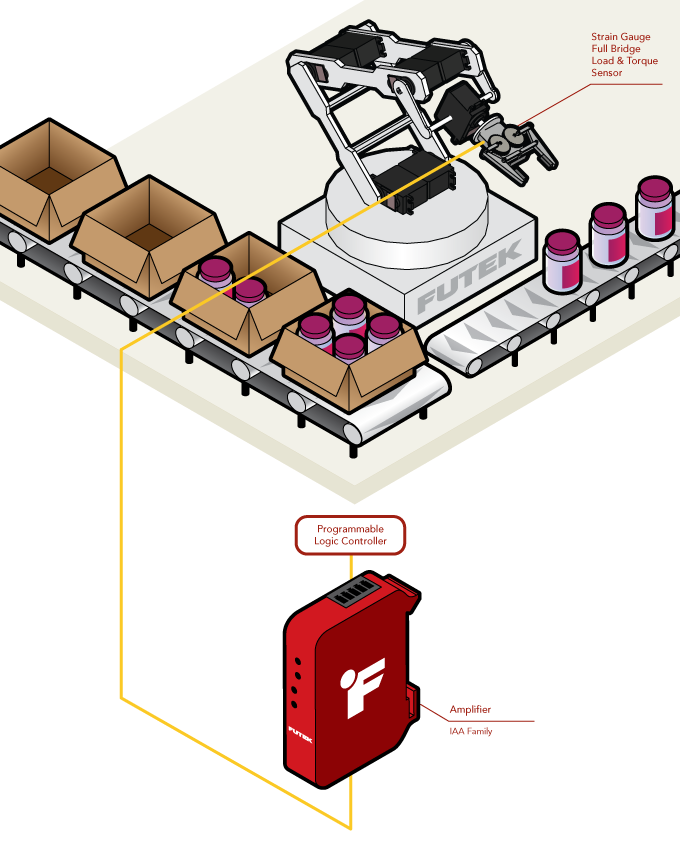 |
|
Application 706
Industrial Automated Robotic Arm
Application Summary
Industrial robots make assembly lines more efficient and reliable. Paired with any full-bridge strain-gauge-based sensor, operators can use new IAA amplifiers to send clear, clean signals to logic controllers that govern the assembly line.
Products in Use
A strain-gauge, full-bridge multi-axial sensor that measures torque and load paired with the IAA100 (voltage) or IAA200 (current). |
 |
|
How it Works
|

















